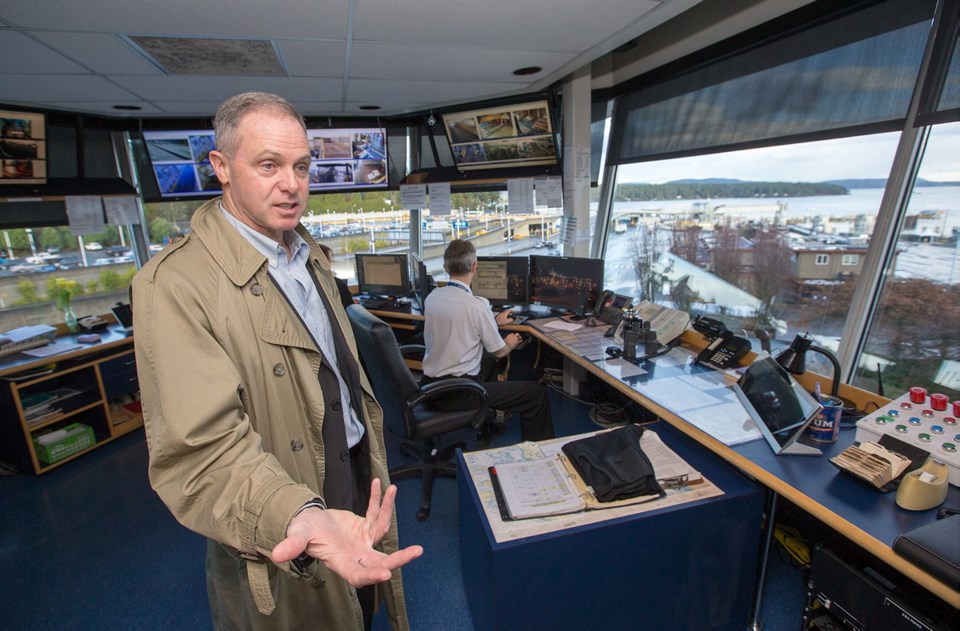sa���ʴ�ý Ferries is facing a review of how well it’s moving millions of passengers annually at a time when it’s facing high demand and struggling to find enough qualified staff.
The NDP government ordered the review last year shortly after it took power, and expects it to be finished in five months.
sa���ʴ�ý Ferries’ mandate is to provide ferry service to the province’s coastal communities. sa���ʴ�ý Ferry Services was converted from a provincial Crown corporation in 2003 into a independent, commercial company. It is governed by a board of directors appointed by the sa���ʴ�ý Ferry Authority, which holds the only voting share for sa���ʴ�ý Ferries. It receives a fee for service from the province to help offset the costs of running minor routes. Last fiscal year, that was about $157.9 million. It also receives a federal-provincial subsidy of $29.2 million.
A lot of things have been changing at sa���ʴ�ý Ferries.
Ridership is climbing, taxing the existing system as population rises and more people embrace travel. The corporation is mapping out billions of dollars worth of long-term plans for its fleet and infrastructure.
Like other employers in sa���ʴ�ý — which at 4.6 per cent has the lowest unemployment rate in the country — sa���ʴ�ý Ferries is struggling to fill jobs. It is casting its net across sa���ʴ�ý and internationally to try to find workers to fill nearly 70 positions along the coast.
Recent initiatives, such as a smoking ban on ferries and at terminals, and a prohibition on remaining in vehicles on closed decks, have grabbed our attention.
The province has promised to slash fares by 15 per cent on minor routes, freeze them on major routes and restore free passenger travel for people age 65 and over Monday to Thursday, except on holidays.
Blair Redlin, former deputy minister of transportation and former chief executive officer of the sa���ʴ�ý Transportation Authority, is leading the review. His job is to look at how well sa���ʴ�ý Ferries meets the needs of ferry users and coastal communities.
Redlin will consider changes to fares and the regulatory model that would make sa���ʴ�ý Ferries more efficient and effective.
He is also tasked with finding opportunities and making recommendations to enhance ferry service and reduce costs without affecting service.
Mark Collins, sa���ʴ�ý Ferries president, said meetings have been held with Redlin, and information provided.
“We think we are a well-managed, well-run company,” Collins said. “If they can find something that we can improve and serve ferry users better, we want to do it. We would welcome that.”
Summer of 2017 saw overloads on major and minor routes as tourism boomed.
“We see a very long-term growth trend with some sawtooth ups and downs along the way,” Collins said.
“During the summer, everything is flat out, so if it gets much busier … we can definitely see the need for more large vessels.”
sa���ʴ�ý Ferries understands the impact on people’s lives if it does not provide the service they need, he said.
The review is not examining whether sa���ʴ�ý Ferries should become part of the provincial government, as it once was.
That is what Jim Abram, Quadra Island resident and ferries watchdog, advocates. He’s shepherding a new change.org petition calling for sa���ʴ�ý Ferries to become part of the Transportation Ministry. When the petition hits 15,000, Abram said, he will deliver it to the legislature along with a similar petition that collected 24,000 supporters.
Abram believes that minor routes would have drastically reduced fares and more sailings if sa���ʴ�ý Ferries was part of the government.
Overloads were common on the Campbell River-Quadra Island run last summer, Abram said. “It was absolutely unbearable this last year.”
Waits discourage people from travelling and inconvenience them, he said. Some ferry riders will leave home a day or so in advance to ensure they can be at a critical appointment.
Brian Hollingshead, co-chairman of the umbrella Ferries Advisory Committee, said in a report that “traffic has been rapidly increasing for the past three years, and there’s no sign of the demand abating.”
Some routes are experiencing “intolerable overloads” and wait times, he said.
While he applauds the upcoming rate drop on minor routes, he predicts it will increase demand and pressure on the system.
“This is clearly no longer a business-as-usual situation. While fares are important, they seem to no longer be a determining factor, as to whether people — residents and visitors alike — will put their money down for a ferry ride.”
The answer to frequently overloaded routes is not necessarily to replace the existing vessel with a larger one, Hollingshead said. Using two ferries instead has proved to be effective in the Gulf Islands.
The chairs of the regional ferry committees do not want sa���ʴ�ý Ferries to be within government, he said.
“There are a lot of people who believe that if that happened, then everything would revert back to the way it was in the ’70s, when fares were a lot cheaper. It wouldn’t.”
“The issue has always been adequate government funding support, regardless of the structure,” Hollingshead said. Despite the challenges, he said, sa���ʴ�ý’s ferry system is one of the best in the world.
More inside:
> Everything you always wanted to know about sa���ʴ�ý Ferries, D2, D3
> Expecting the worst is key to ferry safety, D4



